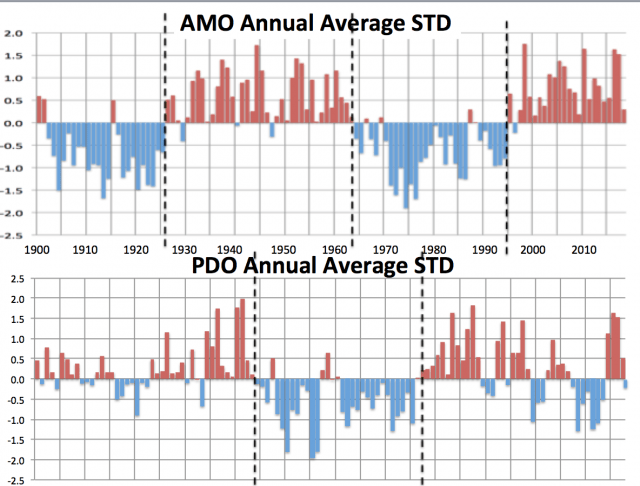I [
Harry Hardrada] recently unearthed an intriguing piece of literature from a 19
th century periodical named 'Ho! For the Pole!' in Littell's Living Age, Volume 66 (1860).
The paper highlights various voyages to the North Pole throughout the 17
th-18
th centuries with meticulous detail. It appears, according to the article, that
many wooden ships penetrated as far north as the 89th latitude in 'open iceless seas' during this time — as in 1665 and 1675.
A bit far-fetched?
Perhaps, on the face of it... but there is some good evidence out there which may suggest otherwise.
This is just a snippet of the article with references to 1665 and 1675 with my own annotations - You can see the whole article on my twitter page linked
HERE.
Today we know about the role of Ocean Oscillations and their relation to climate.
ENSO (El Nino Southern Oscillation) is a major driver of immediate temperature change across the Globe, but little is known about the roles of the AMO (Atlantic Multi-decadal Oscillation) and PDO (Pacific Decadal Oscillation).The current author, along with some others, is under the opinion that both the AMO and PDO are anticorrelate with arctic warmth and arctic sea ice decline.
When both Ocean cycles of the AMO and PDO are warm, a greater amount of heat is circulated around the arctic region hence Arctic 'Amplification' whereas when the cycles are colder arctic sea ice and arctic cold increases.Of course,
most of the warming in the 1930's and post 1980's can be explained by the changing oscillations of the AMO and the PDO.

© weatherbell
We have a good understanding of the cycles of the AMO going back to at least the late 16
th century although our knowledge of the PDO cycles only date back 100 years.
Some alarmists have pointed out that the years 1665 & 1675 occurred during a severe cold spell within the Little Ice Age — the period between 1645-1715 known as the Maunder Minimum — therefore making it highly unlikely that these voyages are true... but look at the graph below:
The AMO had a very strong sustained warm phase between 1650-1710, and
the years 1665 and 1675 fall in nicely with the peak warm periods. Unfortunately, we don't have data for the PDO but some research has led us to believe that the Pacific was equally as warm during this period, as was the Arctic.
Temp change between 1780 (a year of normal solar activity) and 1680 (a year within the depths of the Maunder Minimum) — NASA's Earth Observatory.
The author is not under the opinion that Arctic Ice was non-existent during the Maunder Minimum, but it's not overly far-fetched to suggest that during the seasonal sea ice minimum phases of late August, September, and early October sea ice may have been lower than the present...
...perhaps like 1665 and 1675.
You can follow me, Harry Hardrada, on twitter
HERE.
Social Media channels are restricting Electroverse's reach — be sure to subscribe to receive new post notifications by email (the box is located in the sidebar >>> or scroll down if on mobile).
And/or become a Patron, by clicking here:
patreon.com/join/electroverseThe site receives ZERO funding, and never has.
Any way you can, help us spread the message so others can survive and thrive in the coming times.
The passage was iced up when the expedition tried to get through and had to turn back, but in sending the expedition it indicates knowledge of the North West Passage route - although the book didn't say as much I'm assuming he was aiming for India as opposed to what is now known as the Indies around the Caribbean. Henry VIII died in the mid-16th century.
I wish I'd taken the book - when the hotel was closing down Mr Driscoll, the proprietor, told me I could taken any, and as many books as I wanted, but I was travelling a lot back then and had nowhere to keep them, although I did grab a few.